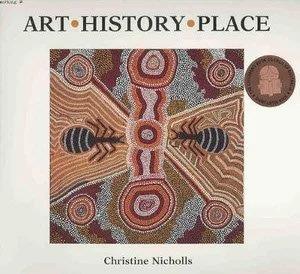This book by a recognised art expert, Christine Nicholls, examines the diversity and visual power of Indigenous Australian art today and explores the traditions and influences that have shaped its development. The Contemporary Acrylic Art Movement begun by a group of Aboriginal men living at Papunya in the early 1970s gave birth to the contemporary Australian Indigenous art movement. But Indigenous art is more than 40,000 years old and has a rich history of influences, motifs and styles of immense diversity.
This book canvases Indigenous art’s connection with the Dreaming, the kinship systems which underpin each artist’s practice, the iconography employed, and the wide range of paintings, artefacts, sculptures and installations which have been produced by Indigenous artists. There are examples and explanations of icons used in art from the Central and Western Desert regions and pronunciation guides for the various words in language scattered throughout the book.
The key message conveyed here is that Indigenous art is dynamic, and that Indigenous artists have a remarkable capacity to incorporate new media, styles and subject matter into their work. Shortlisted for the CBCA Awards 2004, this is a significant work of nonfiction for young readers.

